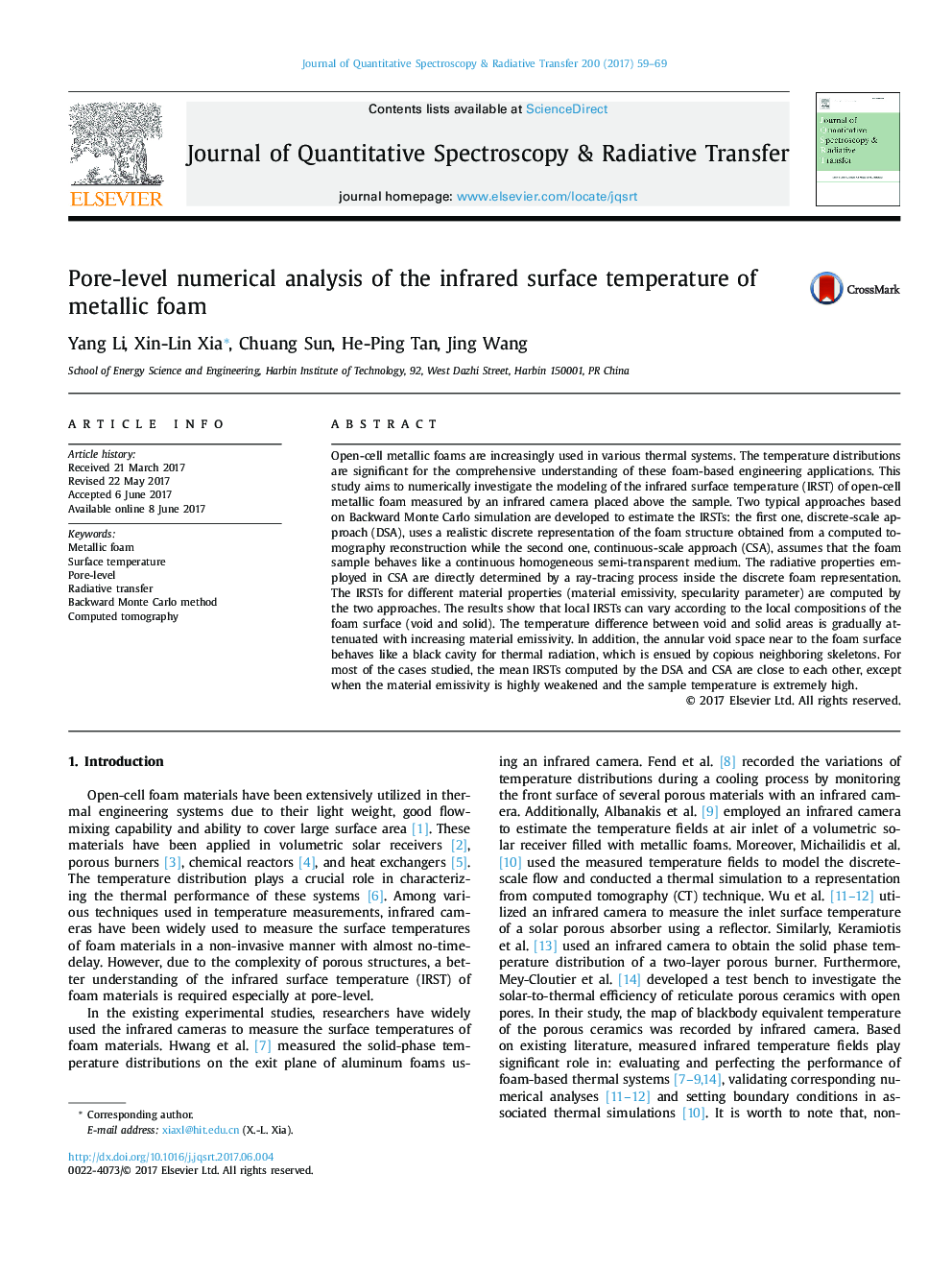| کد مقاله | کد نشریه | سال انتشار | مقاله انگلیسی | نسخه تمام متن |
|---|---|---|---|---|
| 5427061 | 1508615 | 2017 | 11 صفحه PDF | دانلود رایگان |
- Pore-level characteristics of surface temperature are investigated using realistic foam structures.
- Surface temperature is simulated through a Backward Monte Carlo method.
- Local surface temperatures can vary according to the local compositions of the foam surface.
- Annular void space near to the foam surface behaves like a black cavity for thermal radiation.
- Temperature difference between void and solid areas is gradually attenuated with increasing material emissivity.
Open-cell metallic foams are increasingly used in various thermal systems. The temperature distributions are significant for the comprehensive understanding of these foam-based engineering applications. This study aims to numerically investigate the modeling of the infrared surface temperature (IRST) of open-cell metallic foam measured by an infrared camera placed above the sample. Two typical approaches based on Backward Monte Carlo simulation are developed to estimate the IRSTs: the first one, discrete-scale approach (DSA), uses a realistic discrete representation of the foam structure obtained from a computed tomography reconstruction while the second one, continuous-scale approach (CSA), assumes that the foam sample behaves like a continuous homogeneous semi-transparent medium. The radiative properties employed in CSA are directly determined by a ray-tracing process inside the discrete foam representation. The IRSTs for different material properties (material emissivity, specularity parameter) are computed by the two approaches. The results show that local IRSTs can vary according to the local compositions of the foam surface (void and solid). The temperature difference between void and solid areas is gradually attenuated with increasing material emissivity. In addition, the annular void space near to the foam surface behaves like a black cavity for thermal radiation, which is ensued by copious neighboring skeletons. For most of the cases studied, the mean IRSTs computed by the DSA and CSA are close to each other, except when the material emissivity is highly weakened and the sample temperature is extremely high.
Journal: Journal of Quantitative Spectroscopy and Radiative Transfer - Volume 200, October 2017, Pages 59-69
